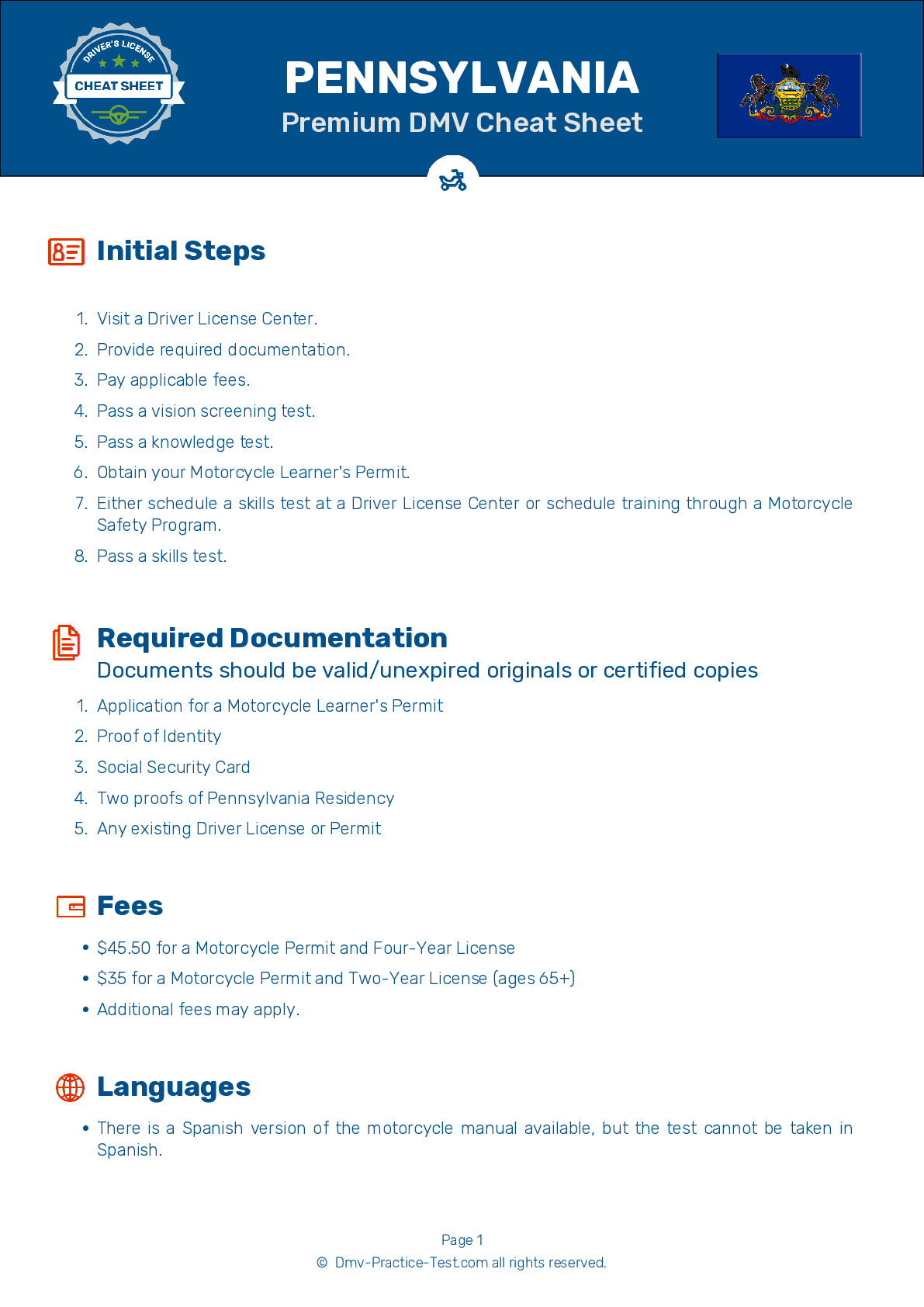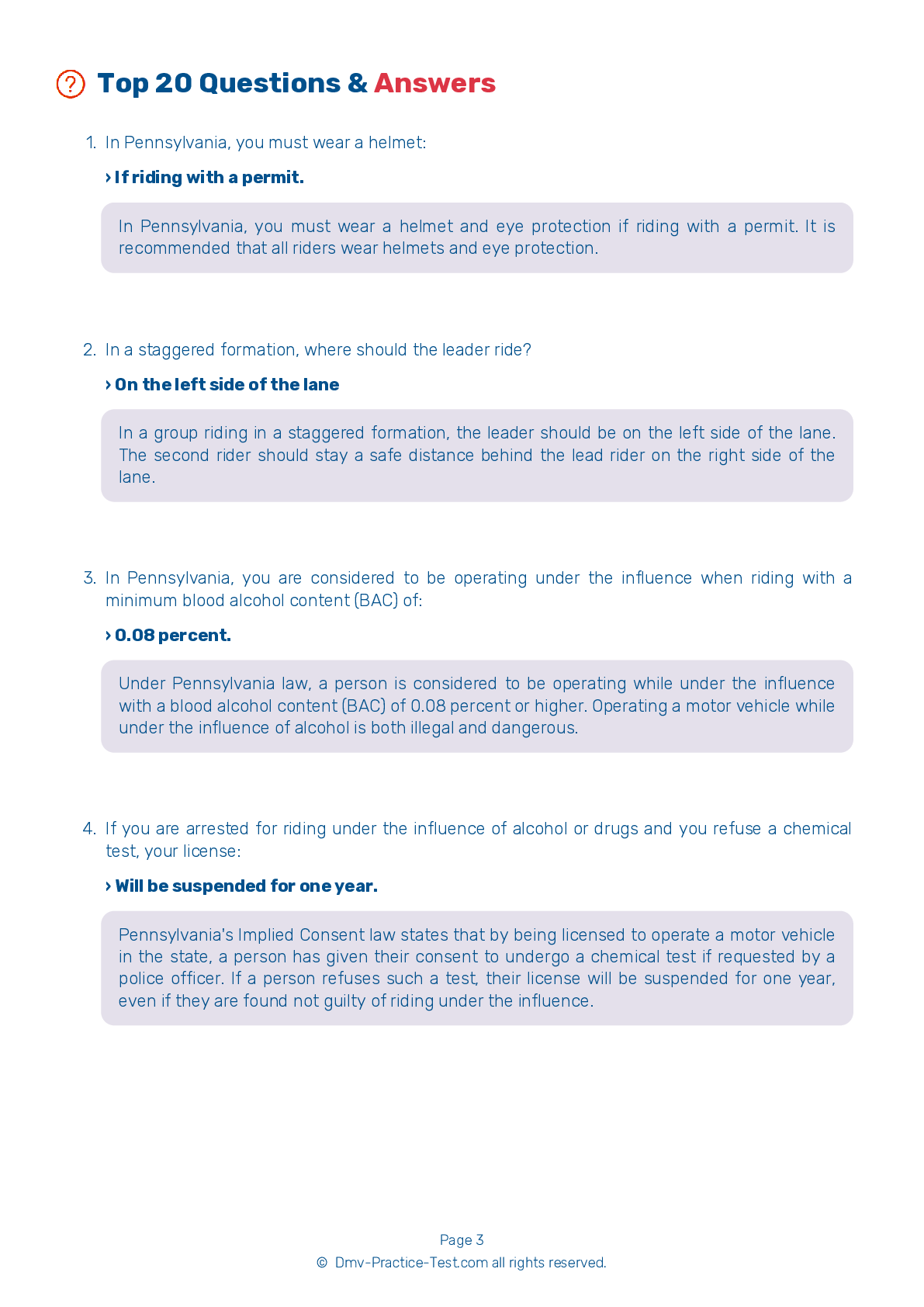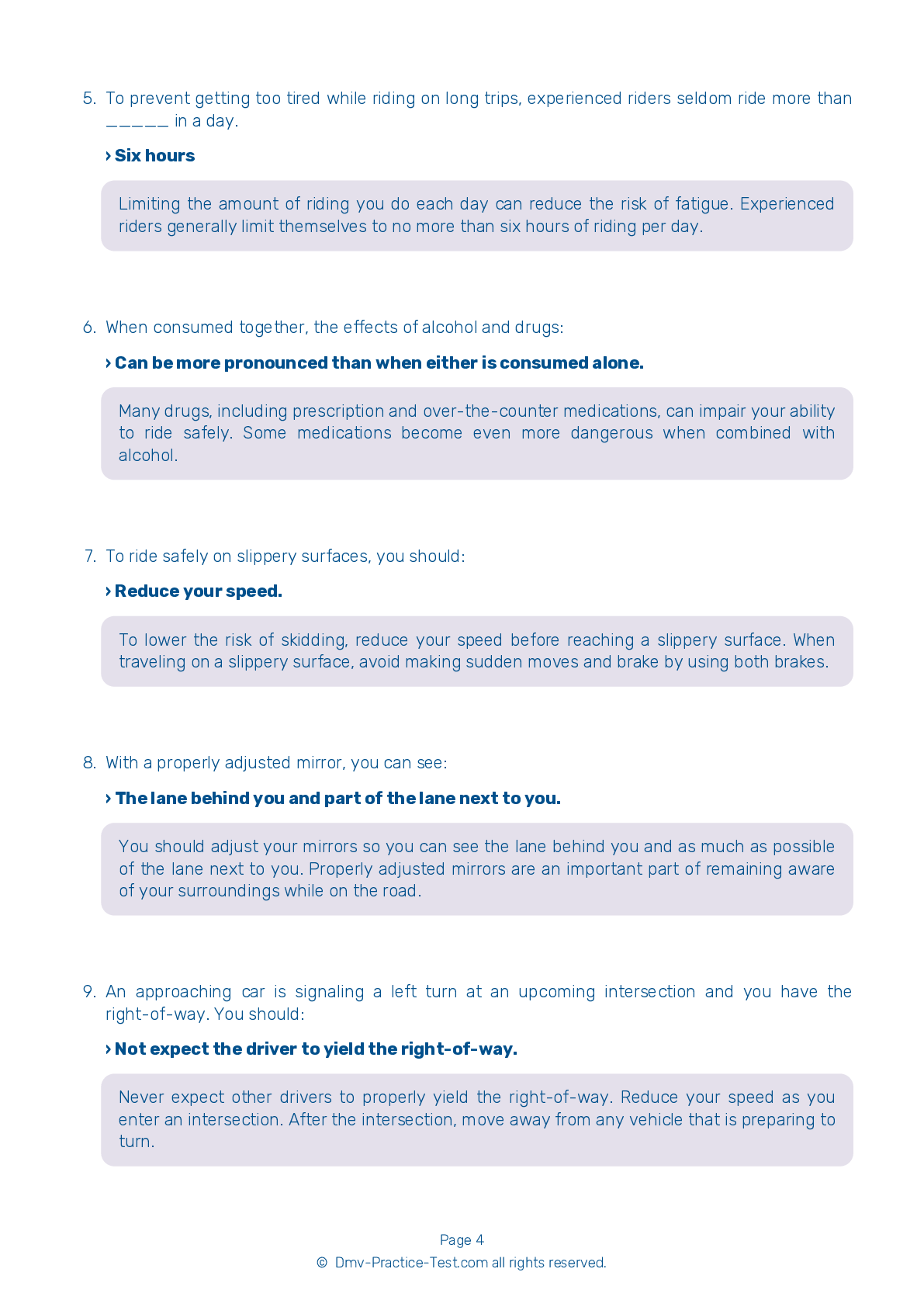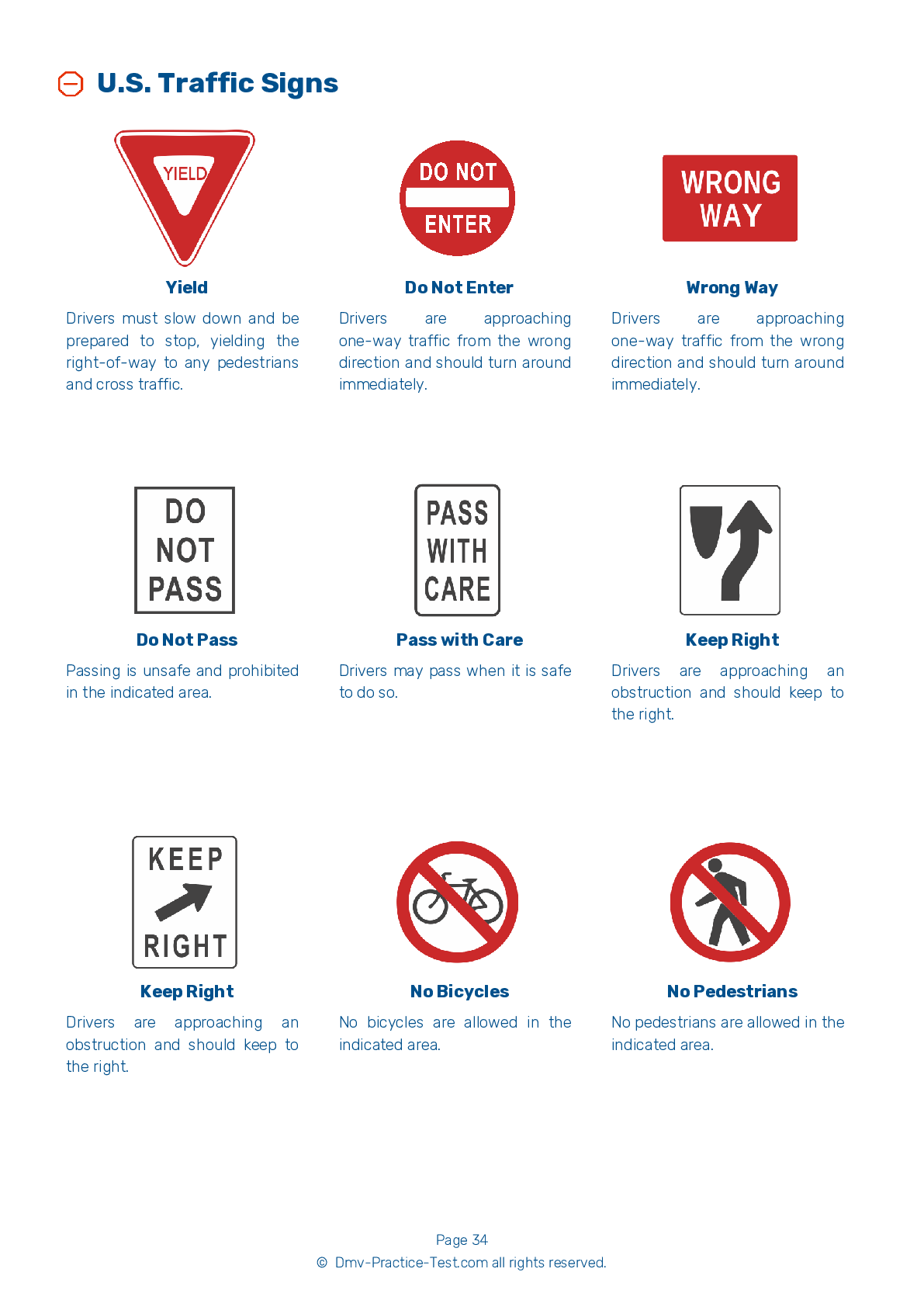Motorcycle Test | License PA 2025 | FREE Online Practice! #16
Take this FREE motorcycle test (license in PA 2025) to check your knowledge of the road rules. To improve your results, download a motorcycle handbook online, study theory, and practice for free on our website. Still worried about how to get a motorcycle license in Pennsylvania in 2025? Check our website for more sample tests, train as much as possible, and boost your grades!
1 . What are the four steps to safely completing a turn?
To safely complete a turn, a rider should slow, look, press, and roll. The rider should reduce their speed when approaching the turn and look through the turn to where they want to go. They should press the handle grip in the direction of the turn and roll on the throttle through the turn to stabilize suspension.
2 . If your rear wheel locks while you are trying to stop quickly, it is usually best to:
If you accidentally lock your rear brake when stopping on a good traction surface, keep it locked until you have completely stopped.
3 . A passenger on a three-wheeled motorcycle should:
A passenger sitting behind an operator on a three-wheeled motorcycle should sit upright at all times. It is not necessary for the passenger to lean into curves with the rider.
4 . If you get a flat tire while riding, hold the handle grips firmly and:
If one of your tires goes flat while you are riding, ease off the throttle to slow down. If you must brake, gradually apply the brake of the tire that isn't flat, if you are certain of which one that is.
5 . When riding in a curve, one safe option is to:
When entering a curve, a safe approach may be to move into the center of your lane and stay there until exiting the curve, especially if traffic is present. Remain alert to changing road and traffic conditions and adjust as necessary.
See the exact questions that will be on the 2025 Pennsylvania DMV exam.
99.2% of people who use the cheat sheet pass the FIRST TIME
Jeneen was tired of paying $5/gallon. She got herself a scooter that required the motorcycle license. She studyed the motorcycle test cheat sheet and passed her test the next day!
Christopher tells us how he knew nothing prior to obtaining the motorcycle study guide, and he only got one question wrong because he clicked on the wrong answer by mistake.



